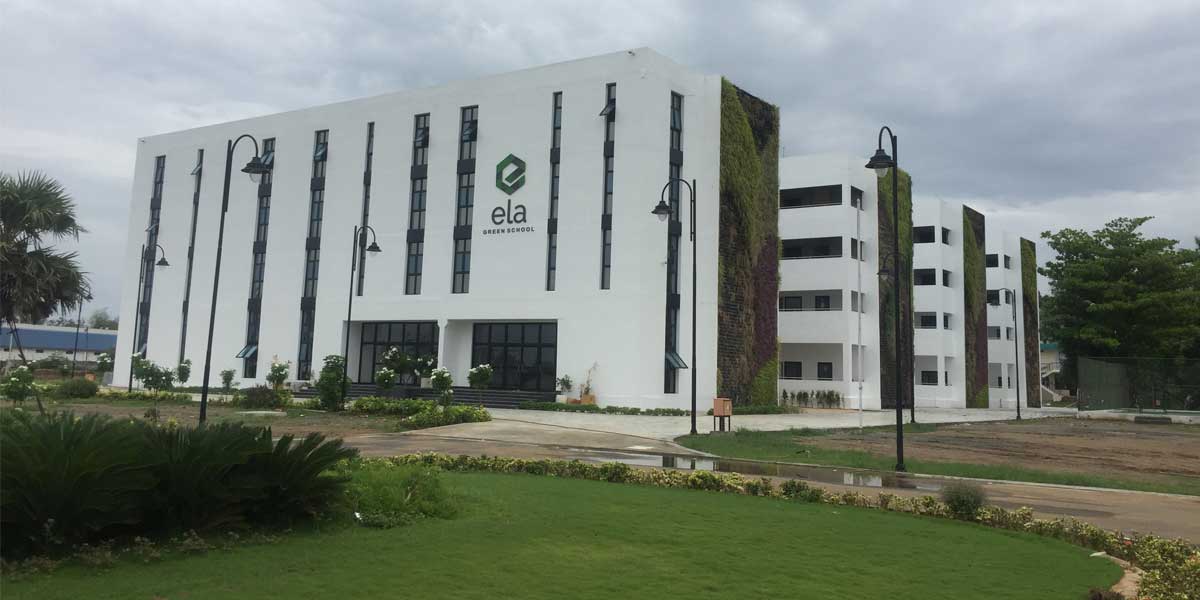

Aggressive and multipronged actions are
needed to decarbonise the building sector and move towards a net-zero energy
and net-zero carbon future, writes MILI MAJUMDAR.
Globally, the building and construction industries contribute about 38 per cent of all energy-related carbon emissions. According to a United Nation Environment Programme (UNEP) report released in 2020, emissions from building operations hit their highest-ever level in 2019, moving the sector farther away from fulfilling its enormous potential to slow climate change and contribute to the Paris Climate Agreement goals. Aggressive and multipronged actions are needed to decarbonise the building sector and move towards a net-zero energy and net-zero carbon future.
A net-zero future must be driven by a deep
decarbonisation of the electricity sector, cleaner adaptation of onsite energy
sources and implementation of more energy-efficiency measures. Currently,
India’s electricity generation is dominated by high-emission coal-fired plants,
which power the bulk of the country’s buildings. Although renewable energy
system prices have drastically reduced over the years, there are still barriers
to extensive use of renewables on site. One major constraint is available
space. Developers would prefer to use roof space for housing service equipment
or as occupant outdoor space rather than accommodating solar energy systems,
for example. The Government will need to incentivise renewables adoption
through smooth grid interface, net metering policies and tariff structures to
make quicker progress.
Energy-efficiency measures can reduce
energy demand drastically in both commercial and residential buildings. India’s
Bureau of Energy Efficiency (BEE) has done extensive work to introduce
efficient appliances and lighting products through its star labelling
programmes. Although the scope for energy-efficiency is maximised if
implemented at the design stage, there is potential for energy-efficiency
retrofits in existing buildings.
A holistic retrofit of lighting and HVAC equipment with more efficient options can save energy consumption up to 20-30 per cent in existing buildings. ‘Deep’ retrofits, such as added insulation or use of high-performance glass instead of low-cost glazing, can work toward this same goal.
The retrofit of New York's Empire State
Building made it one of the world’s most energy-efficient buildings. Through a
combination of eight energy-efficiency projects – including a retrofit of all
6,514 windows, the reuse of
96 per cent of the original frames and
glassware and the installation of 67 elevators that generate electricity
instead of heat when braking – the building has already surpassed its original
energy consumption reduction target of
38 per cent with an annual energy savings of $4.4 million. In April 2019, the New York City Council passed legislation, known as Local Law 97, to mandate all existing buildings 25,000 sq. ft. or larger to reduce their greenhouse gas emissions by 40 per cent by 2030 and by 80 per cent by 2050. The Delhi Development Authority is also laying out its green development policy to move towards low carbon development.
Electricity grid dynamics will also play a vital role in moving towards net-zero goals. Demand flexibility, or the ability to shift energy consumption in time to support grid needs, will become increasingly important as renewables become more common and create wider daily spreads in energy prices. Buildings will face increasing regulatory and economic pressure to respond in real time to changing utility price and delivery structures and grid harmony will be key to a sustainable system.
Globally, developed countries that require
more heating sources are adapting to the electrification of their resources
over typical natural gas options, inspace heating, stovetops, and more. Efforts
are being made to incorporate decarbonised energy sources into their grids. The
transition to renewables has additional benefits for the end-user. For example,
direct fuel combustion for heating and cooking (such as natural gas) produces
harmful indoor pollutants that are detrimental to human health.
As we continue to recover from the pandemic, we are able to look back at the demonstrated value of prioritising our environment and human health. Both are served by transitioning to a sustainable energy model in our buildings, transportation and cities. To gain the future we hope for, net zero must be our goal.
About the author:
Mili Majumdar, is Managing Director of Green Business
Certification Institute, India and Senior Vice President, USGBC. An
architecture graduate and a building technologies specialist, she has more than
two decades of experience in the field of energy and environment with a focus
on sustainable development of habitats. She has worked tremendously in the
sectors of green buildings, climate resilient housing, city planning and urban
transportation.